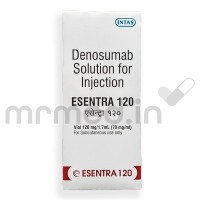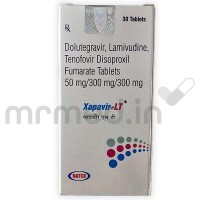Xgrast 300mcg injection contains the active constituent filgrastim. It is a white blood cell growth factor (granulocyte-colony stimulating factor) approved by the FDA to decrease the risk of developing febrile neutropenia ( occurrence of fever or infection associated with low WBC count) and to reduce the duration of neutropenia (low white blood cell count) in people who have non-myeloid cancer and are receiving chemotherapy drugs. It is also used to increase the number of WBC and decrease the length of time of fever in people with acute myeloid leukemia.
It is also used in people undergoing bone marrow transplants and in people with severe chronic neutropenia (low number of neutrophils in the blood). Xgrast 300mcg injection is also used to prepare the blood for leukapheresis (a treatment in which certain blood cells are removed from the blood). It is also indicated to increase the chance of survival in people exposed to harmful amounts of radiation, which can cause severe damage to the bone marrow. Other uses include in patients with advanced HIV infection, which will help to reduce the risk of infections.
Xgrast 300mcg injection belongs to the class of medications called colony-stimulating factors. They work by helping the body to produce more White blood cells. WBC are important because they help your body fight infection. These cells are highly sensitive to the effects of chemotherapy, which might cause a decrease in the number. If your WBC decreases, your body may not have enough cells to combat bacteria, putting you at risk of infection. Inform your physician if you have or had liver disease, kidney problems, sickle cell anemia, or bone disease. Common side effects include fever, pain, rash, cough, shortness of breath, and nosebleed.
Therapeutic Effects of Xgrast 300mcg Injection
If your physician decides that you or your caregiver can administer the Xgrast 300mcg injection at home, then read the “Instructions for use” carefully from the package insert with the medicine. Your doctor or other healthcare professionals will train you on self-administration. Do not administer the medicine if you have not been trained and are not sure about the administration procedure.
Pregnancy
Xgrast 300mcg injection is unsafe when administered during pregnancy because it may cause birth defects in your baby. Consult your doctor if you are pregnant or planning for pregnancy during the treatment.
Breast Feeding
It is unsafe to breastfeed during the treatment with this Xgrast 300mcg injection because it may cause harm to the baby. Please consult your doctor before breastfeeding.
Lungs
It is unknown whether Xgrast 300mcg injection can be administered to patients with lung problems. Consult your doctor if you have any lung diseases before starting the treatment.
Liver
It is unknown whether Xgrast 300mcg injection can be administered in patients with liver disorders. Inform your physician if you have any liver problems before starting treatment with this Injection.
Alcohol
It is unsafe to consume alcohol with Xgrast 300mcg injection. Please consult your doctor for more advice.
Driving
It is unsafe to travel, drive vehicles, or operate heavy machinery after taking (1 hour) Xgrast 300mcg injection. Please consult your doctor.
Common
- Pain in the bones, joints, and muscles
- Pain at the site of Injection
- Fever
- Itchiness and skin rash
- Nausea
- Headaches
- Dizziness and tiredness
- Nose bleeding
- Hair fall
Serious
- Inflammation of Aorta
- Capillary leak syndrome (plasma leaks out of tiny blood vessels)
- Hypersensitivity reactions
- Changes in urine color
- Swelling in hands, feet, face, and abdomen
- Difficulty in breathing
- Sickle cell anemia
Inform your physician if you are experiencing any symptoms of swelling in the face, feet, hands, and abdomen, difficulty in breathing, sudden drop in blood pressure, left abdominal pain, weakness, and skin rashes.
The FDA provides a package insert, which summarizes the relevant scientific information needed for healthcare practitioners and patients to use the drug safely and effectively. The package insert contains safety information, instruction for use, and other information.
Xgrast 300mcg injection is not indicated for everyone. Do not take this medicine if you are allergic to any forms of rubber, latex, pegfilgrastim, filgrastim or any of the other ingredients in this medicine.
This medicine may affect your kidneys. Regular kidney function tests will be taken to monitor your kidney functions. Inform your physician if you have any kidney problems.
No, This medicine secretes in small amounts in breast milk. Xgrast 300mcg injection can cause harm to your baby. Please consult your doctor if you are breastfeeding.
Molecule name: Filgrastim | Therapeutic class: Hematopoietic |
Pharmacological class: colony-stimulating factor | Indications: Neutropenia |


-700x700-product_thumb.jpg)
-700x700-product_popup.jpg)
-700x700-product_popup.jpg)
-80x80-product_popup.jpg)
-80x80-product_thumb.jpg)
-80x80-product_thumb.jpg)



